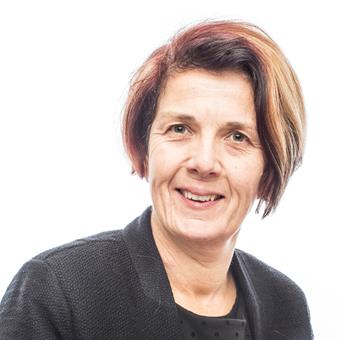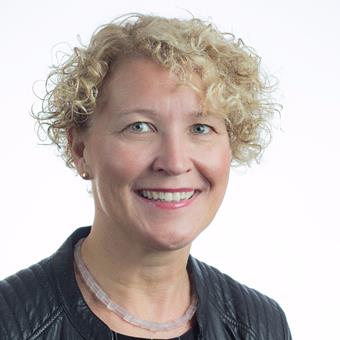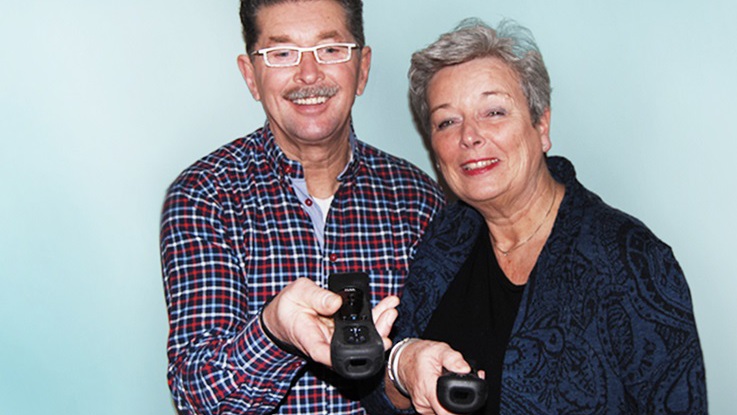 The risk of dying of a heart attack has nearly halved over the last few decades. This means that more patients are surviving a severe heart attack, but then have to live with chronic heart failure. For them, self-care can be crucial for both quality of life and survival.
The risk of dying of a heart attack has nearly halved over the last few decades. This means that more patients are surviving a severe heart attack, but then have to live with chronic heart failure. For them, self-care can be crucial for both quality of life and survival.“Ultimately, our research deals with how people with chronic heart disease could live a good live and how medical treatment can help them, chiefly with the help of education for patients and their families,” Strömberg explains.
As research students in nursing, Strömberg and Jaarsma got to know each other at European cardiac medicine conferences. It was the start of a collaboration that strengthens both their common area of research and their own careers.
It was the mid-1990s, and research in cardiovascular nursing was in its infancy.
 “There were few nurses at the cardiac medicine conferences, and it was exciting to meet a colleague to share my research interests with. Right then we started collaborating,” says Strömberg, who is now a professor at Linköping University.
“There were few nurses at the cardiac medicine conferences, and it was exciting to meet a colleague to share my research interests with. Right then we started collaborating,” says Strömberg, who is now a professor at Linköping University.Jaarsma was a researcher with the same focus at the University of Groningen in the Netherlands.
When a professorship in nursing with a focus on teaching in health care was announced at LiU, she became interested.
“There were more professors of nursing at LiU than in all of the Netherlands, and there was room to create my own research group. The interdisciplinary research and good cooperation with the county council were also attractive,” Jaarsma says.
Two years ago, she became a professor at LiU Norrköping, and her collaboration with Anna Strömberg in Linköping has continued to develop.
“Again and again, it becomes apparent that together we are stronger. This strengthens our field of research, our teaching, and our postgraduate course,” Strömberg says.
The collaboration is also a support in their own research careers.
“A researcher’s existence can sometimes be lonely, but we can get into parts of each other’s research projects or run them jointly. We can unburden and support each other, but also be constructive critics in a way that’s not always obvious in academia,” Jaarsma says.
Important to show helpfulness
At the same time they are, in a sense, competitors with each other, but they want to combat the negative effects of competition.
“It’s important to show helpfulness, cooperation, and generosity between research colleagues, and be an example for younger researchers in their career,” Strömberg says.
Both continue to take part in the nurses’ division of the European Society of Cardiology and participate in the planning of their scientific conferences. They have also taken the initiative on a scientific periodical for cardiovascular nursing research that is ranked seventh among some 50 periodicals in the field. The editorial board is at Linköping University, with Jaarsma as editor-in-chief and Strömberg as one of the assistant editors.
 One of their first collaborations was on developing an instrument for evaluating the self-care of heart patients – the European Self-Care Behaviour Scale – which is now used in several countries. Since then, self-care has formed the core of their common research interest.
One of their first collaborations was on developing an instrument for evaluating the self-care of heart patients – the European Self-Care Behaviour Scale – which is now used in several countries. Since then, self-care has formed the core of their common research interest.A tool to motivate patients
Jaarsma and Strömberg have developed a self-care theory that helps to improve patients to self-care. They did this along with Barbara Riegel from the University of Pennsylvania, who until recently was a guest professor at Linköping University.
Their biggest joint project right now is a large randomised study evaluating whether computer engineering of various types can be used in patient education – a Nintendo Wii, for example, as a tool to motivate patients to increase their physical activity and quality of life.
Close collaboration like Jaarsma’s and Strömberg’s yield big exchanges, but also require good balance between working on shared projects and their own.
Jaarsma is heading up the continued testing and development of the self-care instrument. She has also focused her research on quality of life and sexual counselling for patients with heart failure.
Common with undernourishment
For Strömberg’s part, her research into patient education led her into studies of how cognitive ability is affected by heart failure and how the education can be adapted to people with impaired cognitive abilities.
She is also leading studies on nutritional intake and chronic heart failure.
“Undernourishment is common among patients with heart failure, and affects the development of the disease. That’s why I’m studying which factors cause inadequate nutrition and what role dietary counselling can play.”
Two research groups focused on cardiovascular health have made visiting Linköping University attractive to researchers in other countries. The contacts with Dutch researchers are active, and two nursing researchers who have just defended their theses are now on site.
Text: Birgitta Weibull
Photo: Jeppe Gustafsson & Göran Billesson. Second picture: Anna Strömberg. Third picture: Tiny Jaarsma
LiU magazine no. 2, 2013


